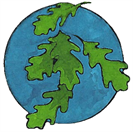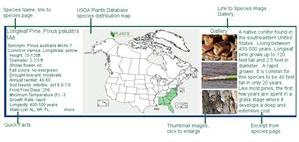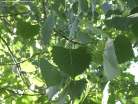

Kansas is home to a many native trees, but one thing you might notice is that Kansas has no native pine trees. That's right-no native pines. It is the only area, other than extreme northern Canada, that can boast such a claim. Kansas forests are comprised of Eastern Cottonwood, Osage Orange, American Elm, Oak, Hickory and many others over a range of habitats. Bluffs, mesas, prairies, flood plains, marshes, and rolling hills help add to the biological diversity of Kansas.
Most of Kansas' deciduous forests are found in the
Most of Kansas' deciduous forests are found in the


The Sunflower State, 'Through hardships to the stars'
Kansas
Native Trees of Kansas

Want to add your tree to our picture gallery? Click here for details!
-Color denotes a tree that is rare or endangered

State Tree: Eastern Cottonwood
We are part of the Hubpages community.
Click here for more info.
Click here for more info.


™


Custom Search
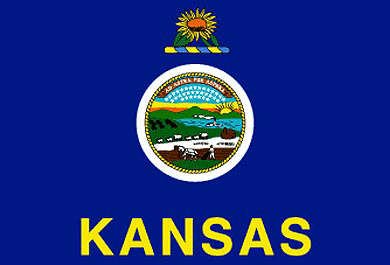

eastern half of the state while the central and western regions are dotted with yucca and cedar
trees. The tallest tree, according to the 2012 Big Tree Registry, is an American Sycamore
found in Shawnee County. It measures 120' tall and almost 8 feet in diameter. The widest
tree on the list is an Osage Orange with a circumference of 35'! The northeastern area was
once covered in glaciers. When they retreated, large pink hued stones were left behind.
These rounded stones were actually picked up from the Minnesota area and then deposited in
Kansas by the great forces glaciers command. This also resulted in the gentle hills and
associated forests enjoyed by so many. Heading to the southeast, the flood plains and gently
rolling hills of the Verdigris River Valley allow for some of the most diverse flora and fauna
found anywhere in the state. Surrounded by Oak-Hickory forests, the ground littered with
acorns, hickory nuts, and walnuts, it is easy to see why the wildlife is so abundant in this
region.
Moving a little west from the deciduous eastern forests, the Flint Hill region of central
Kansas is the home of the largest remaining tall grass prairie in the world. Central Kansas is
also a mecha for birch watching, as thousands of migratory shore birds stop over at the a
complex of wetlands. Each year, 45% to 90% of the shore birds will descend into areas like
the Cheyenne Bottoms and sit in the branches of the many hackberry trees. The 77 mile long
Wetlands and Wildlife National Scenic Byway is a great way to see and appreciate the
abundance of wildlife.
Nature lovers visiting Kansas may be surprised by the rocky outcroppings, flat topped
mesas, or deep canyons seen along Gypsum Hills Scenic Byway, which runs 42 miles
through some of Kansas' most distinct landscapes. There are many hiking and equestrian
trail riding opportunities to enjoy in this region, with springs to discover, cedar trees to scent
the air, and panoramic views that go on forever. There is also the Chalk Pyramids of Grove County.
Designated a National Natural Landmark, they are a series of Native American sculpted chalk monoliths and are one of many unique geologic attractions Kansas has to offer. There are also mushroom rocks, for which an entire State Park has been developed, chalk spires, and cedar lined limestone bluffs.
The most famous and arguably devastating man-made natural disaster in North America occurred in western Kansas. The Dust Bowl was an agricultural development gone horribly wrong and resulted in the total loss of the native ecosystem. With all the top soil stripped and flung into the wind, recovery was no easy task. It took many decades of hard work and constant nurturing to return the land back to something similar to what it once was. Now, the Cimarron National Grasslands occupies the space and visitors can hike along the rocky Santa Fe trail or picnic under the canopy of the cottonwood groves. Western Kansas is also home to Prairie Dog State Park, where a large community of prairie dogs watch over the last remaining adobe house in Kansas.
From star gazing on the flat prairies with the endless horizon, fishing in the many lakes, hiking through terrain varying from deciduous forests to rocky canyons, and more, Kansas has a rich diversity of habits and activities to please any nature lover. The many state parks offer camping to enable those wishing for a weekend respite or a longer stay to enjoy the natural surroundings and easy way to take in the sites and experiences Kansas has to offer.
Designated a National Natural Landmark, they are a series of Native American sculpted chalk monoliths and are one of many unique geologic attractions Kansas has to offer. There are also mushroom rocks, for which an entire State Park has been developed, chalk spires, and cedar lined limestone bluffs.
The most famous and arguably devastating man-made natural disaster in North America occurred in western Kansas. The Dust Bowl was an agricultural development gone horribly wrong and resulted in the total loss of the native ecosystem. With all the top soil stripped and flung into the wind, recovery was no easy task. It took many decades of hard work and constant nurturing to return the land back to something similar to what it once was. Now, the Cimarron National Grasslands occupies the space and visitors can hike along the rocky Santa Fe trail or picnic under the canopy of the cottonwood groves. Western Kansas is also home to Prairie Dog State Park, where a large community of prairie dogs watch over the last remaining adobe house in Kansas.
From star gazing on the flat prairies with the endless horizon, fishing in the many lakes, hiking through terrain varying from deciduous forests to rocky canyons, and more, Kansas has a rich diversity of habits and activities to please any nature lover. The many state parks offer camping to enable those wishing for a weekend respite or a longer stay to enjoy the natural surroundings and easy way to take in the sites and experiences Kansas has to offer.

Named the State Tree
in 1937, Eastern Cottonwood is
the most common tree in
Kansas. Called the 'Pioneer Tree
of Kansas', homesteaders often
judged the land by the success of
its cottonwood groves. Populus
deltoides is a popular amenity
tree due to its distinct foliage,
rapid growth rate, and the shade
it provides on hot summer days.
Often found at courthouses and
other prominent locations,
Cottonwoods in Kansas have
sheltered many famous
politicians. The Kansas State
Capitol Cottonwood is said to have provided respite from the sun's rays as William
McKinley and William Howard Taft gave speeches outside.
A 96 foot tall Eastern Cottonwood, located in Sheriden County, is listed as the
state Champion on Kansas' 2012 Big Tree Registry. Measured in 2008, the canopy
spread is 127 feet and the trunk circumference is over 35 feet! That's big!! In fact,
when compared to other tree species' trunks on the list, it is the widest by far! At
their tallest, most Eastern Cottonwoods attain heights around 190 feet, often reaching
80 feet in the first 20 years. Several cultivars have been developed over the years as
this tree is so
popular in
landscaping.
Eastern Cottonwood, Populus deltoides
©2012 TreesForMe Original Image. See usage requirements.
Kansas Native Tree Facts

Forested acres: 5.2 million
Percent of total area forested: 10%
Most Common Tree: Eastern Cottonwood, Populus deltoides
Most Valuable Timber Tree: Black Walnut
Number of National Forests: 0, Does have the Cimmaron National Grasslands
Number of State Parks/Forests/Recreational Areas: 24
Number of Tree city USA communities: 102
Number of invasive tree species: 27 (see state list for noxious/invasive plants)
Insects of Concern: Emerald Ash Borer, Gypsy Moth, Asian Longhorned Beetle
Pathogens of Concern: Oak Wilt, Dutch Elm Disease, Thousand Canker Disease
Number of tree families in our collection: 25
Sources:
Arborday.org
US Forest Service
Kansas Forest Service, Kansas State University
Kansas Forest Service, Champion Trees of Kansas, May 2012
United States Department Of Agriculture, Natural Resources Conservation Services: PLANTS Database
Additional state resources:
Kansas Department of Wildlife, Parks, and Tourism- Annual Park Passes available!
Kansas State University Research and Extension
Percent of total area forested: 10%
Most Common Tree: Eastern Cottonwood, Populus deltoides
Most Valuable Timber Tree: Black Walnut
Number of National Forests: 0, Does have the Cimmaron National Grasslands
Number of State Parks/Forests/Recreational Areas: 24
Number of Tree city USA communities: 102
Number of invasive tree species: 27 (see state list for noxious/invasive plants)
Insects of Concern: Emerald Ash Borer, Gypsy Moth, Asian Longhorned Beetle
Pathogens of Concern: Oak Wilt, Dutch Elm Disease, Thousand Canker Disease
Number of tree families in our collection: 25
Sources:
Arborday.org
US Forest Service
Kansas Forest Service, Kansas State University
Kansas Forest Service, Champion Trees of Kansas, May 2012
United States Department Of Agriculture, Natural Resources Conservation Services: PLANTS Database
Additional state resources:
Kansas Department of Wildlife, Parks, and Tourism- Annual Park Passes available!
Kansas State University Research and Extension
Kansas Native Tree Families and Genera

click to enlarge.
Useful information while browsing species:
• How to read a botanical name
• How to use our species boxes:
• How to read a botanical name
• How to use our species boxes:
-Color denotes a tree that is rare or endangered
Additional Resources:
North American Native Tree Families
North American A to Z List by Scientific Name
North American A to Z List by Common Name
North American Native Tree Families
North American A to Z List by Scientific Name
North American A to Z List by Common Name

Please note: This is not a complete list of all native tree families and species found in Kansas. We are constantly working towards a more comprehensive list and will add families and their species as completed.
Follow the links to view species native to Kansas. If the genus is not linked, species are listed on the family page.
Aceraceae, Maple
Aquifoliaceae, Holly
Annonaceae, Custard-apple
Betulaceae, Birch
Betula, Birch
Corylus, Hazelnut
Ostrya, Hophornbeam
Bignoniaceae, Trumpet Creeper
Caprifoliaceae, Honeysuckle
Cornaceae, Dogwood
Cornus, Dogwood
Nyssa, Tupelo
Cupressaceae- Cypress
Juniperus, Juniper
Ebenaceae, Ebony
Diospyros, Persimmon
Aceraceae, Maple
Aquifoliaceae, Holly
Annonaceae, Custard-apple
Betulaceae, Birch
Betula, Birch
Corylus, Hazelnut
Ostrya, Hophornbeam
Bignoniaceae, Trumpet Creeper
Caprifoliaceae, Honeysuckle
Cornaceae, Dogwood
Cornus, Dogwood
Nyssa, Tupelo
Cupressaceae- Cypress
Juniperus, Juniper
Ebenaceae, Ebony
Diospyros, Persimmon
Ericaceae, Heath
Fabaceae, Pea
Gleditsia, Locust
Fagaceae, Beech
Quercus, Oak
Hippocastanaceae, Horse-chestnut
Juglandaceae, Walnut
Carya, Hickory
Juglans, Walnut
Lauraceae, Laurel
Moraceae, Mulberry
Oleaceae, Olive
Fraxinus, Ash
Platanaceae, Plane-tree
Platanus, Sycamore
Fabaceae, Pea
Gleditsia, Locust
Fagaceae, Beech
Quercus, Oak
Hippocastanaceae, Horse-chestnut
Juglandaceae, Walnut
Carya, Hickory
Juglans, Walnut
Lauraceae, Laurel
Moraceae, Mulberry
Oleaceae, Olive
Fraxinus, Ash
Platanaceae, Plane-tree
Platanus, Sycamore
Rosaceae, Rose
Crataegus, Hawthorn
Prunus, Plum/Cherry
Rubiaceae, Madder
Rutaceae, Rue
Salicaceae, Willow
Populus, Cottonwood
Salix, Willow
Sapindaceae, Soapberry
Sapotaceae, Sapodilla
Tiliaceae, Lindon
Tilia, Basswood
Ulmaceae, Elm
Celtis, Hackberry
Ulmus, Elm
Crataegus, Hawthorn
Prunus, Plum/Cherry
Rubiaceae, Madder
Rutaceae, Rue
Salicaceae, Willow
Populus, Cottonwood
Salix, Willow
Sapindaceae, Soapberry
Sapotaceae, Sapodilla
Tiliaceae, Lindon
Tilia, Basswood
Ulmaceae, Elm
Celtis, Hackberry
Ulmus, Elm
Kansas Endangered or Threatened Tree Species

Additional Resources:
North American Rare and Endangered Trees
External Links:
USDA PLANTS Database
Kansas Department of Wildlife, Parks, and Tourism
North American Rare and Endangered Trees
External Links:
USDA PLANTS Database
Kansas Department of Wildlife, Parks, and Tourism
Kansas does not have any tree species listed as threatened or endangered at this time. See External Links for more information.
Looking for a nursery near you?
Check out our nursery listing by county below!
Sorry, we do not currently have any tree nursery listings for this state. We do update these lists, so please check back.
Check out our nursery listing by county below!
Sorry, we do not currently have any tree nursery listings for this state. We do update these lists, so please check back.



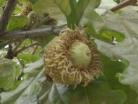
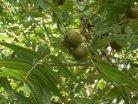
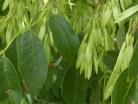
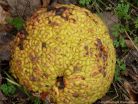
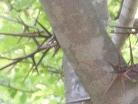
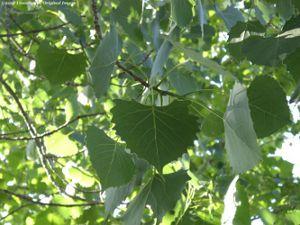
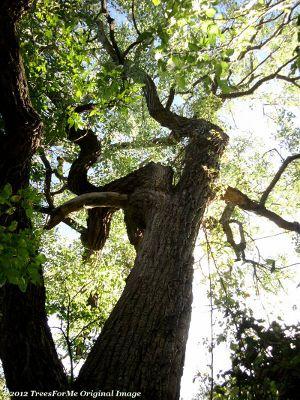
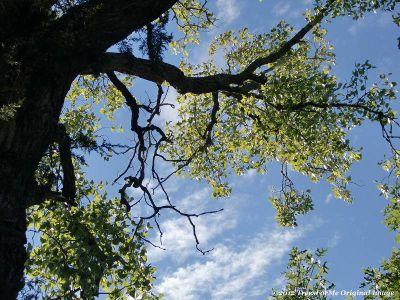
Eastern Cottonwood trees are found in every county of Kansas
but their native range includes all but the 6 most western states in
the United States and the 3 most northern territories of Canada.
Able to survive down to -43F with a medium tolerance to salinity,
fire, drought, and flooding, about the only thing this native tree can't
stand is shade. It is able to grow on a variety of sites but care
should be taken when deciding placement, because other than too
much shade, it is susceptible to ice damage and wind breakage.
Populus deltoides does best when it has access to ample water
and will draw heavily on the water table. It can grow in all soil
types, but does best on well draining sandy loams. Heavier soils
such as clay, will have a negative impact on the tree over time.
The unique leaves of this short lived tree are triangular with toothed
margins. In the fall, Eastern Cottonwoods turn yellow before the
winter leaf drop, which creates a thick layer of leaf litter well
beyond the reaches of the sprawling canopy. The winter reveals
the massive, sometimes damage twisted structures otherwise
hidden in the light green summer foliage.
Tree lists:
•A-Z by scientific
name
•A-Z by common
name
•By Family
For state A-Z list click state name below.
•A-Z by scientific
name
•A-Z by common
name
•By Family
For state A-Z list click state name below.
Eastern Cottonwood, Populus deltoides, leaves
©2012 TreesForMe Original Image. See usage requirements.
Eastern Cottonwood, Populus deltoides, leaves
©2012 TreesForMe Original Image. See usage requirements.
- Trees
- A-Z scientific
- A-Z by Common Name
- Families
- Aceraceae Maple Family
- Anacardiaceae Sumac Family
- Annonaceae Custard Apple Family
- Aquifoliaceae Holly Family
- Arecaceae, Palm Family
- Betulaceae Birch family
- Bignoniaceae Trumpet Creeper Family
- Burseraceae Frankincense Family
- Caprifoliaceae Honeysuckle Family
- Chrysobalanaceae Coco-plum Family
- Cornaceae Dogwood Family
- Cupressaceae Cypress Family
- Cyrillaceae Cyrilla Family
- Ebenaceae Ebony Family
- Ericaceae Heath Family
- Fabaceae Pea Family
- Fagaceae Beech Family
- Hamamelidaceae Witch Hazel Ffamily
- Hippocastanaceae Horse Chestnut Family
- Juglandaceae Walnut Family
- Lauraceae Laurel Family
- Leitneriaceae Corkwood Family
- Magnoliaceae Magnolia Family
- Meliaceae Mahogany Family
- Moraceae Mulberry Family
- Myricaceae Bayberry Family
- Myrsinaceae Myrsine Family
- Myrtaceae Myrtle Family
- Nyctaginaceae Four Oclock Family
- Olacaceae Olax Family
- Oleaceae Olive Family
- Pinaceae Pine Family
- Platanaceae Plane Tree Family
- Polygonaceae Buckwheat Family
- Rhamnaceae Buckthorn Family
- Rosaceae Rose Family
- Rubiaceae Madder Family
- Rutaceae Rue Family
- Salicaceae Willow Family
- Sapindaceae Soapberry Family
- Sapotaceae Sapodilla Family
- Simaroubaceae Quassia Family
- Styracaceae Storax Family
- Symplocaceae Sweetleaf Family
- Theaceae Tea Family
- Tiliaceae Lindon Family
- Ulmaceae Elm Family
- Taxaceae Yew Family
- Yucca Family
- Browse by State
- Rare or Endangered Species
- Trees_with_Special_Uses
- Tallest and Biggest
- Noxious Weeds
- Causes
- About Us
- Our Stores


